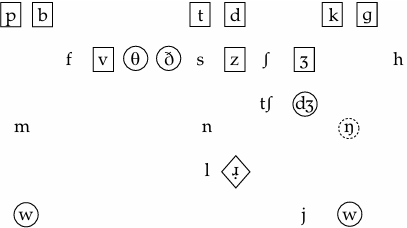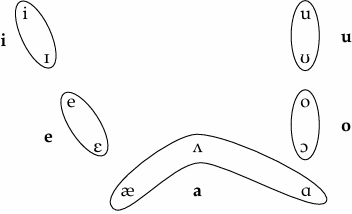
Russian–English
 المؤلف:
Mehmet Yavas̡
المؤلف:
Mehmet Yavas̡
 المصدر:
Applied English Phonology
المصدر:
Applied English Phonology
 الجزء والصفحة:
P198-C8
الجزء والصفحة:
P198-C8
 2025-03-19
2025-03-19
 632
632
Russian–English
The overlay of the native language phonemes onto the target English inventory reveals the following:

Other Russian consonants are /pj, bj, tj, dj, kj, gj, fj, vj, sj, zj, x, xj, ts, mj, nj, rj, lj/.
Missing target phonemes in L1 include /θ, ð, ʤ, ŋ, w/, which have the substitutes [t, d, ʧ, ŋ, v], respectively.
Notable distributional and/or allophonic mismatches concern the following:
• All voiced obstruents are devoiced in final position, resulting in commonly observed homophonies neutralizing the target contrasts, such as bag - back, cab– cap, bed– bet, save– safe, in favor of the voiceless member.
• Voiceless stops, /p, t, k/, unlike in English, are unaspirated and provide another source for observable foreign accent.
• While the lateral liquid is quite similar to that of English (i.e. ‘dark’), we have a different situation with the non-lateral. The Russian r-sound is an alveolar trill and this gives rise to a distinct foreign accent. There are some cases that provide minor phonetic differences. Among these are /t, d, n/, which are dental in Russian, and /ʧ/, which is slightly more palatalized in Russian.
As the list of Russian phonemes below the diagram demonstrates, Russian has several palatalized consonants, and learners may use the palatalized sound when English targets occur in environments conducive to palatalization, such as before a high front vowel or /j/.
Similar to the situation mentioned for Turkish, /ŋ/ targets in final position undergo a two-step process. First is the insertion of the velar support, /g/, and then the subsequent devoicing of it to [k], yielding productions such as going [goɪŋk].
The clashes in the vowel systems of L1 and L2 result in the following under differentiations of the target distinctions:

The limited five-vowel system of Russian is reduced to three, [i, a, ə] in unstressed syllables. Although both English and Russian are stress-timed languages, vowel reductions work differently; in Russian, [ə] never occurs immediately before the stressed vowel, and this results in non-reduction in many pretonic syllables of English target words. Also, Russian words contain only one stress; thus learners will tend to stress only the syllable with the tonic accent.
The syllable structure of Russian, which can be described as (C) (C) (C) V (C) (C) (C), is comparable in its complexity to that of English, and thus, this area is not expected to be problematic for the learners.
The following summarizes the major trouble spots:
• missing target phonemes: /θ, ð, ʤ, ŋ, w/;
• aspiration;
• final devoicing of the obstruents;
• salient phonetic differences: non-lateral liquid;
• insufficient separation of target vowel contrasts;
• stress;
• rhythm.
 الاكثر قراءة في Phonology
الاكثر قراءة في Phonology
 اخر الاخبار
اخر الاخبار
اخبار العتبة العباسية المقدسة


